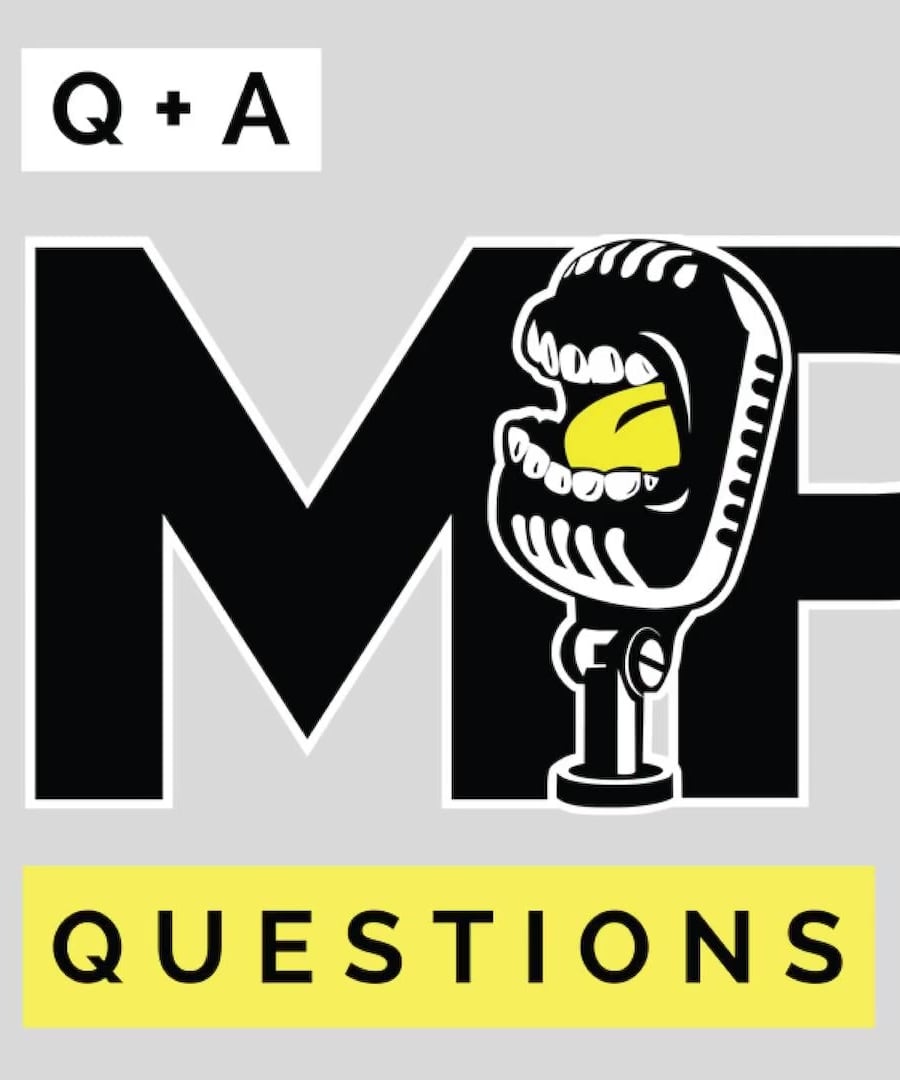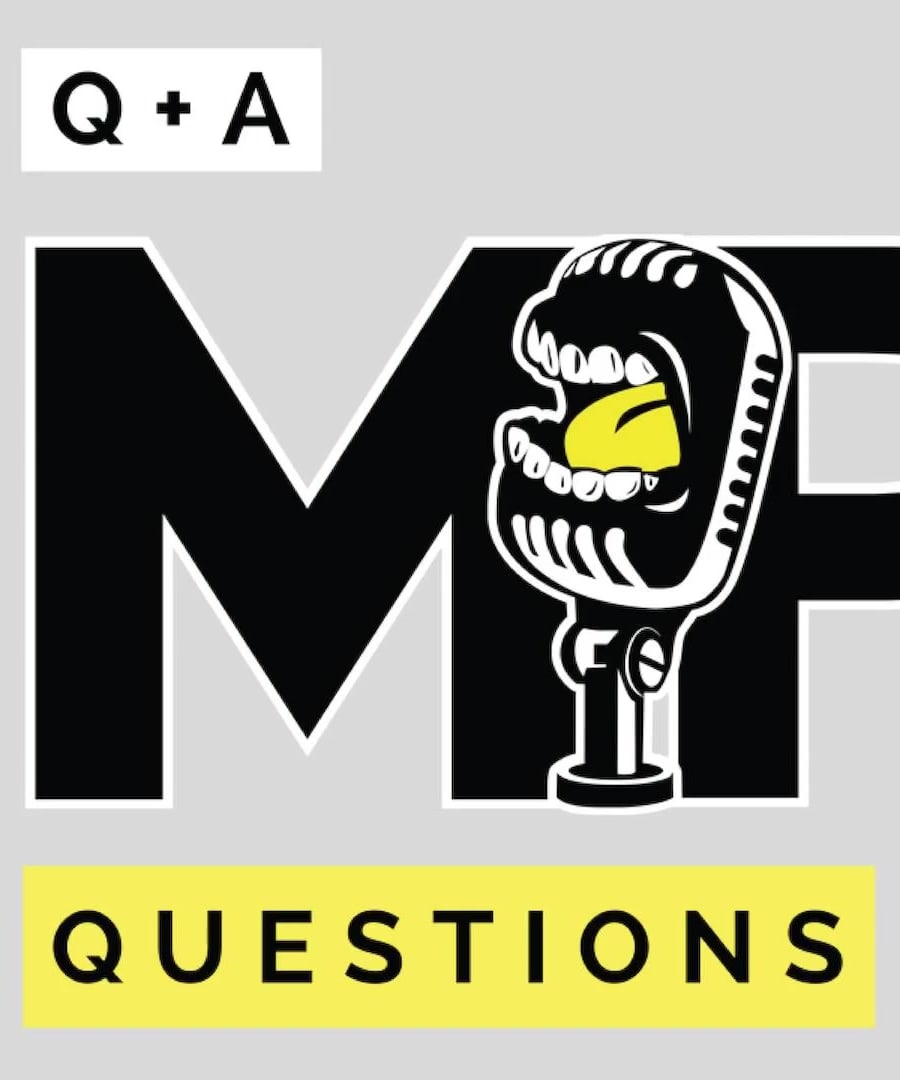How to lower visceral fat
Sources:
Reducing visceral fat involves a combination of effective exercise, maintaining muscle mass, managing diet, and addressing metabolic health. Here are some key points from the Mind Pump Podcast:
-
Strength Training:
- Strength training is highlighted as the most effective exercise method for reducing visceral fat. It helps in maintaining muscle mass while in a calorie deficit and improves insulin sensitivity, which is crucial for metabolic health 1 2.
- When compared to other forms of exercise like cardio, strength training has a superior effect on lowering visceral fat due to its impact on insulin sensitivity 3.
-
Muscle Mass:
-
Diet and Caloric Management:
- Managing diet by ensuring a proper caloric intake is vital. Excess calorie consumption leads to an increase in both visceral and subcutaneous fat. Consistency in diet and avoiding binge-eating behaviors are essential to prevent fat accumulation in visceral areas 6 5.
- For stubborn areas like the lower belly, a combination of dieting to lose body fat and building muscle through methodical calorie management and reverse dieting can help in reducing fat stores effectively 7.
-
Stress Management:
- Managing stress is crucial as high stress levels can lead to increased storage of visceral fat. Addressing sleep and recovery is a key component of stress management, which in turn helps the body become more effective at burning fat 8.
By focusing on strength training, maintaining muscle mass, managing diet and caloric intake, and addressing stress, you can effectively reduce visceral fat and improve overall health.
RELATED QUESTIONS-
What specific diet tips can help reduce visceral fat?
Sources:
To help reduce visceral fat, the Mind Pump Podcast offers several specific diet tips and insights:
-
Caloric Management:
- Reducing visceral fat requires consuming fewer calories than you burn. Excess calorie intake leads to the storage of energy as body fat, including both visceral and subcutaneous fat 1.
-
Stable Eating Patterns:
- Avoid excessive dieting and on-off eating patterns. Consistent eating behaviors help manage visceral fat more effectively. Fluctuating between extreme dieting and binge eating can promote visceral fat storage due to metabolic stress 2.
-
Balanced Macronutrients:
- Focus on balanced macronutrient intake. A diet rich in protein, healthy fats, and complex carbohydrates helps maintain muscle mass and prevent insulin resistance, which is closely linked to visceral fat accumulation 3.
-
Insulin Sensitivity:
- Strength training improves insulin sensitivity, aiding in the reduction of visceral fat. Building muscle increases glycogen storage, thus better managing blood sugar levels and reducing the likelihood of visceral fat storage 4.
-
Consistent Meal Timing:
- Eating at consistent times and avoiding late-night binge-eating can help regulate insulin levels and reduce visceral fat. Regular meal timing ensures a steady energy supply and prevents spikes in blood sugar levels 1.
-
Avoid High-Sugar and Processed Foods:
- Minimizing the intake of high-sugar and highly processed foods can help reduce visceral fat. These foods can cause insulin spikes and promote fat storage around the organs 2.
By following these dietary strategies, along with regular exercise and stress management, you can effectively reduce visceral fat and improve overall health.
RELATED QUESTIONS-
Is it possible to loose fat while parring down muscle
Sources:
Yes, it is possible to lose fat while intentionally reducing muscle, but it comes with specific challenges and considerations. The podcast offers insights into this process:
-
Body's Adaptive Nature:
- The body adapts by reducing muscle to become more efficient with fewer calories. This lowers overall energy expenditure. When calories are restricted, the body prioritizes energy efficiency by paring down muscle, which is metabolically expensive to maintain [1].
-
Diet Alone:
- Weight loss through diet alone often results in a 50/50 split between muscle and fat loss. As muscle mass decreases, the body burns fewer calories, which can eventually slow down fat loss [2].
-
Muscle Loss and Metabolic Slowdown:
- The process of muscle loss can lead to a slower metabolism. This is because muscle tissue requires more energy to maintain than fat tissue. As the body loses muscle, it becomes more efficient in conserving energy, which can stall further fat loss if not managed carefully [1].
Practical Tips for Managing Muscle and Fat Loss
-
Improve Insulin Sensitivity:
- Strength training can improve insulin sensitivity and reduce visceral fat, which is crucial when managing both muscle and fat loss [3].
-
Balanced Diet:
- Incorporate a balanced diet rich in protein to minimize muscle loss while targeting fat loss [4].
-
Avoid Excessive Cardio:
- Combining excessive cardio with calorie restriction can lead to muscle loss. Opt for moderate exercise routines that don't overly stress the body into catabolizing muscle [5].
-
Periodic Muscle Maintenance:
- Include resistance training even during calorie deficits to help maintain as much muscle as possible while aiming to lose fat [6].
By following these guidelines, it's possible to target fat loss while managing (though not entirely avoiding) muscle loss, thus optimizing body composition changes.
RELATED QUESTIONS-
What are key strategies for fat loss and muscle reduction?
Sources:
Achieving fat loss while also reducing muscle can be challenging. Here are key strategies discussed by the Mind Pump Podcast hosts:
Caloric Deficit and Cardio
-
Cutting Calories:
-
Increasing Cardio:
- Engage in high amounts of cardiovascular exercise. While this helps with calorie burning, it can further muscle loss if overdone [1].
Strength Training and Metabolism Management
-
Strength Training:
-
Progressive Overload:
- Apply progressive overload techniques to maintain muscle mass and strength, which helps keep metabolism elevated [3].
Nutritional Strategies
-
Protein Intake:
- Ensure adequate protein intake (targeting grams of protein equal to your target body weight) from whole natural foods [4].
-
Calorie Cycling:
- Implement calorie cycling, alternating between low-calorie days and maintenance days to prevent metabolic slowdown and maintain muscle [5].
Psychological Management
-
Patience and Consistency:
- Approach fat loss and muscle reduction with patience, recognizing that sustainable changes take time. Consistent exercise and balanced nutrition are key [3].
-
Avoid Extreme Measures:
These strategies can help you achieve fat loss while managing muscle reduction effectively, ensuring a healthier overall approach to body composition changes.
RELATED QUESTIONS-
Create a one week workout plan that will burn body fat and pare down muscle.
Sources:
Based on insights from the Mind Pump Podcast, here's a one-week workout plan designed to burn body fat and pare down muscle. This plan incorporates strength training to signal the body to maintain muscle mass, but with an emphasis on cardio to support fat loss.
Day 1: Full-Body Strength Training
- Warm-up: 5-10 minutes of light cardio and dynamic stretching
- Main Exercises:
- Squats: 3 sets of 8-12 reps
- Bench Press: 3 sets of 8-12 reps
- Deadlifts: 3 sets of 8-12 reps
- Overhead Press: 3 sets of 8-12 reps
- Rows: 3 sets of 8-12 reps
- Cardio Finisher: 15-20 minutes of high-intensity interval training (HIIT) [1] [2]
Day 2: Active Recovery
- Activity: Low-intensity activities like walking, yoga, or swimming
- Focus: Mobility exercises and stretching [3]
Day 3: Upper Body Strength Training
- Warm-up: 5-10 minutes of light cardio and dynamic stretching
- Main Exercises:
- Pull-ups: 3 sets of 8-12 reps
- Dumbbell Shoulder Press: 3 sets of 8-12 reps
- Incline Dumbbell Press: 3 sets of 8-12 reps
- Lateral Raises: 3 sets of 8-12 reps
- Bicep Curls: 3 sets of 12-15 reps
- Tricep Extensions: 3 sets of 12-15 reps
- Cardio Finisher: 15-20 minutes of HIIT
Day 4: Steady-State Cardio
- Activity: Moderate-intensity cardio session like brisk walking, cycling, or rowing for 30-60 minutes [4]
Day 5: Lower Body Strength Training
- Warm-up: 5-10 minutes of light cardio and dynamic stretching
- Main Exercises:
- Deadlifts: 3 sets of 8-12 reps
- Lunges: 3 sets of 12 reps (each leg)
- Leg Press: 3 sets of 8-12 reps
- Leg Curls: 3 sets of 8-12 reps
- Calf Raises: 3 sets of 12-15 reps
- Cardio Finisher: 15-20 minutes of HIIT
Day 6: HIIT and Core Training
- Warm-up: 5-10 minutes of light cardio and dynamic stretching
- HIIT Session:
- Burpees: 30 seconds on, 30 seconds off (6 rounds)
- Mountain Climbers: 30 seconds on, 30 seconds off (6 rounds)
- Jump Squats: 30 seconds on, 30 seconds off (6 rounds)
- Core Exercises:
- Planks: 3 sets of 1 minute each
- Russian Twists: 3 sets of 20 reps (each side)
- Bicycle Crunches: 3 sets of 20 reps (each side) [5]
Day 7: Rest
- Focus: Rest and recovery
- Activity: Light stretching or a gentle yoga session
This plan is balanced, combining both strength training to signal muscle retention and various forms of cardio to maximize fat burn. Consult a fitness professional for personalized advice and modifications based on your fitness level and goals.
RELATED QUESTIONSCreate a one week workout plan that will burn body fat and pare down muscle using only compound lifts, HIIT and steady state cardio. Include rest times.
Sources:
Based on insights from the Mind Pump Podcast, here's a balanced one-week workout plan that focuses on compound lifts, high-intensity interval training (HIIT), and steady-state cardio, designed to burn body fat and pare down muscle, with appropriate rest times.
Day 1: Full-Body Compound Lifts and HIIT
- Warm-up: 10 minutes of light cardio and dynamic stretching
- Workout:
- Squats: 3 sets of 6-8 reps (2-3 minutes rest)
- Deadlifts: 3 sets of 6-8 reps (2-3 minutes rest)
- Pull-ups: 3 sets of 6-8 reps (2-3 minutes rest)
- Bent-over Rows: 3 sets of 6-8 reps (2-3 minutes rest)
- HIIT: 8 rounds of 20 seconds of work followed by 10 seconds of rest (Tabata protocol) using exercises like burpees and mountain climbers [1]
Day 2: Active Recovery and Mobility
- Activity: Low-intensity activities like walking, yoga, or mobility exercises
- Focus: Joint mobility and dynamic stretching [2]
Day 3: Full-Body Compound Lifts and Steady-State Cardio
- Warm-up: 10 minutes of light cardio and dynamic stretching
- Workout:
- Bench Press: 3 sets of 6-8 reps (2-3 minutes rest)
- Military Press: 3 sets of 6-8 reps (2-3 minutes rest)
- Barbell Lunges: 3 sets of 6-8 reps per leg (2-3 minutes rest)
- Pull-ups: 3 sets of 6-8 reps (2-3 minutes rest)
- Steady-state cardio: 30-40 minutes of moderate-intensity running or cycling [3]
Day 4: Rest
- Focus: Complete rest and recovery activities
Day 5: Full-Body Compound Lifts and HIIT
- Warm-up: 10 minutes of light cardio and dynamic stretching
- Workout:
- Deadlifts: 3 sets of 6-8 reps (2-3 minutes rest)
- Squats: 3 sets of 6-8 reps (2-3 minutes rest)
- Pull-ups: 3 sets of 6-8 reps (2-3 minutes rest)
- Overhead Press: 3 sets of 6-8 reps (2-3 minutes rest)
- HIIT: 10 rounds of 30 seconds of work followed by 30 seconds of rest using sprints or battle ropes [1]
Day 6: Steady-State Cardio with Core Work
- Cardio: 45-60 minutes of steady-state cycling or incline walking
- Core Work:
- Planks: 3 sets of 30-60 seconds (1-minute rest)
- Russian Twists: 3 sets of 20 reps (1-minute rest)
Day 7: Rest and Recovery
- Focus: Rest and gentle stretching or yoga
Key Points:
- Warm-up: Always start with 10 minutes of light cardio and dynamic stretching.
- Compound Lifts Focus: Emphasize major lifts like squats, deadlifts, bench presses, pull-ups, and rows [1].
- HIIT: Short, intense bursts to maximize calorie burn in a short time.
- Steady-State Cardio: Helps in burning additional calories without overtaxing the body.
- Rest Times: Ensure 2-3 minutes of rest between compound lift sets.
This regimen ensures the body is effectively stimulated to burn fat while maintaining muscle mass through strength training, balancing with cardio and rest for recovery. Always focus on proper form to prevent injuries.
RELATED QUESTIONSWhat should to cardio, HIIT and strength training ratio be for a 5x a week workout program to burn fat and pare down muscle
Sources:
To burn fat while paring down muscle, a 5x a week workout plan with a balanced ratio of cardio, HIIT, and strength training is essential. The hosts of Mind Pump recommend strength training as the cornerstone for optimizing fat loss while highlighting when and how to integrate cardio and HIIT.
Recommended Ratio
- Strength Training: 3 days a week
- HIIT: 1-2 days a week
- Cardio (Steady-State): 1-2 days a week
Weekly Schedule
- Day 1: Strength Training
- Day 2: Cardio (Steady-State)
- Day 3: Strength Training
- Day 4: HIIT
- Day 5: Strength Training
- Day 6: Rest
- Day 7: Optional Light Activity/Rest
Detailed Plan
Day 1: Strength Training
- Warm-up: 10 minutes of light cardio and dynamic stretching
- Exercises:
- Squats: 3 sets of 6-8 reps (2-3 minutes rest)
- Bench Press: 3 sets of 6-8 reps (2-3 minutes rest)
- Pull-ups: 3 sets to failure (2-3 minutes rest)
- Overhead Press: 3 sets of 6-8 reps (2-3 minutes rest)
Day 2: Cardio (Steady-State)
- Activity: 45-60 minutes of moderate-intensity running, cycling, or brisk walking
Day 3: Strength Training
- Warm-up: 10 minutes of light cardio and dynamic stretching
- Exercises:
- Deadlifts: 3 sets of 6-8 reps (2-3 minutes rest)
- Barbell Rows: 3 sets of 6-8 reps (2-3 minutes rest)
- Lunges: 3 sets of 8-10 reps per leg (2-3 minutes rest)
- Dips: 3 sets to failure (2-3 minutes rest)
Day 4: HIIT
- Warm-up: 5-10 minutes of light cardio
- Workout: 8 rounds of 30 seconds of high intensity (e.g., sprints, battle ropes) followed by 90 seconds of rest
Day 5: Strength Training
- Warm-up: 10 minutes of light cardio and dynamic stretching
- Exercises:
- Front Squats: 3 sets of 6-8 reps (2-3 minutes rest)
- Incline Bench Press: 3 sets of 6-8 reps (2-3 minutes rest)
- Chin-ups: 3 sets to failure (2-3 minutes rest)
- Dumbbell Shoulder Press: 3 sets of 8-10 reps (2-3 minutes rest)
Day 6: Rest
- Focus: Complete rest or light activity such as walking or yoga
Day 7: Optional Light Activity/Rest
- Focus: Gentle stretching or mobility work
Key Points
- Strength Training: Should always be the foundation of your routine; it maintains lean body mass and supports all other exercises [1].
- HIIT: More efficient in burning calories in a shorter amount of time and less likely to cause muscle loss compared to traditional cardio [2].
- Steady-State Cardio: Easier on the joints and helps burn additional calories without overtaxing the muscles [1].
- Rest: Adequate rest is crucial to prevent overtraining and promote recovery.
By following this structured plan, you can effectively balance cardio, HIIT, and strength training to achieve your fitness goals.
RELATED QUESTIONSWhat should the HIIT to strength training ratio be for a 5x a week workout program to burn fat and pare down muscle
Sources:
For a 5x a week workout program focused on burning fat and paring down muscle, the balance between HIIT and strength training is crucial. According to Mind Pump, incorporating both forms of exercise helps achieve effective fat loss and muscle toning.
Recommended Ratio
The hosts suggest the following breakdown:
- Strength Training: 3-4 days a week
- HIIT: 1-2 days a week
Weekly Schedule
- Day 1: Strength Training
- Day 2: HIIT
- Day 3: Strength Training
- Day 4: HIIT or Rest
- Day 5: Strength Training
Key Points
- Strength Training: Should remain foundational as it helps maintain muscle mass, boosts metabolism, and provides overall body sculpting benefits 1.
- HIIT: Serves as a hybrid form of exercise combining the benefits of cardio and resistance training. It burns lots of calories in a short time and preserves muscle while promoting fat loss. Studies suggested in the podcast indicate that weight loss from HIIT is more likely to be from fat rather than muscle 1.
- Balance: It's important to balance HIIT and strength workouts to avoid burnout and overtraining while maximizing fat loss 2.
Example Workout Plan
Day 1: Strength Training
- Warm-up: Light cardio and dynamic stretches
- Workout:
- Squats: 3 sets of 6-8 reps
- Bench Press: 3 sets of 6-8 reps
- Bent Over Rows: 3 sets of 6-8 reps
Day 2: HIIT
- Warm-up: 5 minutes of jogging
- Workout:
- 8 rounds of 30 seconds sprinting followed by 90 seconds walking
Day 3: Strength Training
- Warm-up: Light cardio and dynamic stretches
- Workout:
- Deadlifts: 3 sets of 6-8 reps
- Overhead Press: 3 sets of 6-8 reps
- Pull-ups: 3 sets to failure
Day 4: HIIT (or Rest)
- Warm-up: Light cardio
- Workout:
- 6 rounds of 1 minute high-intensity exercises (e.g., burpees) followed by 2 minutes low-intensity exercises (e.g., walking)
Day 5: Strength Training
- Warm-up: Light cardio and dynamic stretches
- Workout:
- Lunges: 3 sets of 8-10 reps per leg
- Incline Dumbbell Press: 3 sets of 6-8 reps
- Seated Rows: 3 sets of 6-8 reps
By following this balanced approach, you can effectively target fat loss while maintaining lean muscle.
RELATED QUESTIONS



























